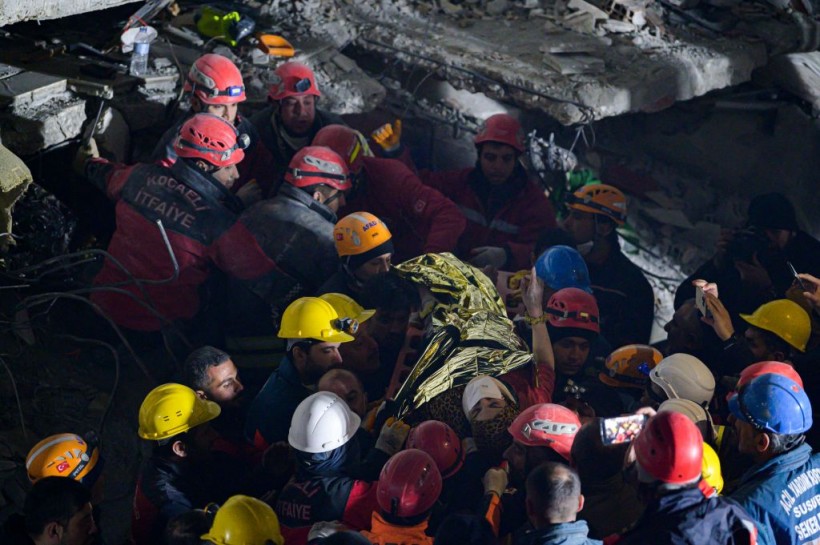The first individuals to aid in the early aftermath of a terrible earthquake, if someone is stuck in their fallen house or office building and waiting for rescue, are unlikely to be trained experts. Structural engineer Forrest Lanning told NPR that neighbors have the biggest impact on the rescue because they are the first ones there when disaster strikes.
According to Lanning and other emergency and disaster response experts, people should be aware that effective support often comes from nearby neighborhoods. It is one of many lessons learned by specialists after examining disasters such as the 7.8 magnitude earthquake that devastated major sections of Turkey and Syria.

Seher, a 15-year-old Syrian woman raises her arms as she is carried on a stretcher by rescue personnel after being rescued from under the rubble where she was trapped over 210 hours, in Hatay, southeastern Turkey, on February 14, 2023, a week after a deadly earthquake struck parts of Turkey and Syria.
Not Enough Search and Rescue Personnel
As the death toll on the Turkey and Syria earthquake reaches more than 39,000, experts said that this reflects how important search and rescue efforts are within the first 12 to 48 hours. That window time is an opportunity to save people who are trapped under collapsed buildings.
Usually, efforts are focused on locations where bystanders have found people alive. Lanning explained that it takes a long time at each building to listen for survivors and save them.
Unfortunately, there are not enough local search and rescue teams on the ground and international teams take 24 to 48 hours to arrive. It is the same case as the case in Samandağ, Turkey where civilians were digging through rubble in an attempt to save their family and friends. It was only a couple of hours later when they arrived, but they were stretched thin.
In the US, the Community Emergency Response Team was developed to teach people disaster response training. They teach them what to do after a disaster, where to get water after an emergency, how to check immobile neighbors, and how to search collapsed buildings.
READ ALSO: 7.8-Magnitude Earthquake Hits Southern Turkey Near Syria, Killing More Than 50 People
Immediate Deployment of the Military Is a Must
The military is best equipped to operate in a disaster-transformed landscape. That is why in every disaster there would be an immediate mobilization of rescue crews and military. However, that is not what happened in Turkey and Syria.
According to an analysis published by the nonprofit think tank Middle East Institute, the Turkish government failed to immediately mobilize its military to aid in the rescue efforts or establish the all-important field hospitals and airstrips. Due to that, the government was criticized.
Professor Natalie Simpson from the University at Buffalo School of Management said that the single, biggest failure in emergency response is failing to understand that it is an emergency. That means the situation is not in normal conditions and that the best thing to do is to stop it.
Turkey is an earthquake-prone region so it will always be susceptible to devastation. Simpson noted that the lesson in this recent disaster is that it is never too early to activate a large-scale response; the sooner they get on, the better it will be.
Mitigation and Prevention
Lindsay Davis from the US Geological Survey said that mitigation and prevention are the most effective in minimizing disaster losses. Lanning added that what happened to Turkey and Syria may inspire global communities in strengthening infrastructure, especially those in earthquake-prone regions, to withstand a disaster like this.
He said that most damages were done due to the type of construction and buildings. Most of them are concrete, which is easy to construct but can also easily hide imperfections.
RELATED ARTICLE: 7.8 Magnitude Turkey-Syria Earthquake Not Common in Strike-Slip Fault; Strong Aftershocks Explained
Check out more news and information on Earthquake in Science Times.




![Earth's Quasi-Moon Kamo‘oalewa Could Originate From Lunar Surface Not Asteroid Belt [Study]](https://1721181113.rsc.cdn77.org/data/thumbs/full/53275/89/56/50/40/earths-quasi-moon-kamo-oalewa-could-originate-from-lunar-surface-not-asteroid-belt-study.png)









